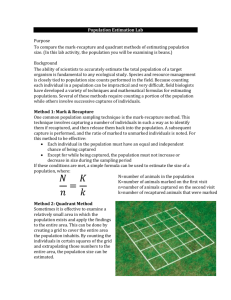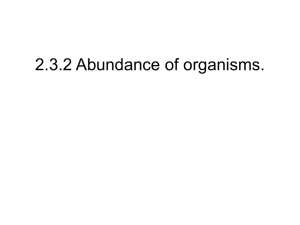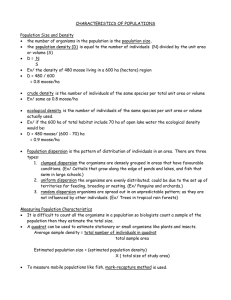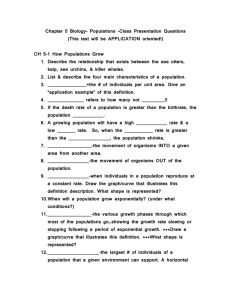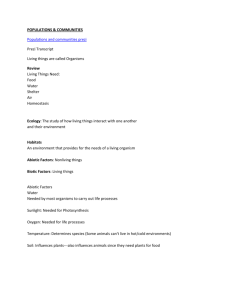The Nature of Scientific Knowledge
advertisement
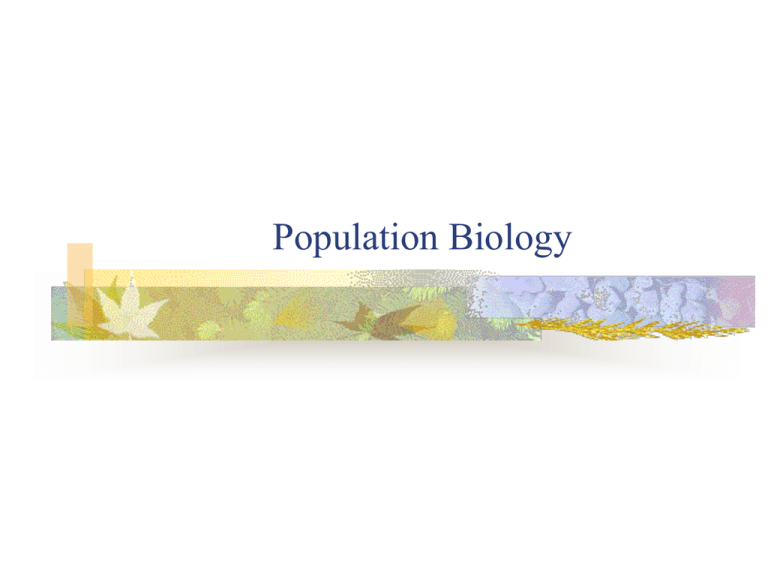
Population Biology What is Population Biology? Population Biology asks the question: Why is a population the size that it is? Main Idea #1 Given ideal conditions for growth and reproduction, a population of organisms will grow exponentially. Exponential Growth Curve Main Idea #2 Most populations go through a series of growth phases, which can be represented by a logistic growth curve. Logistic or Sigmoid Growth Curve This Growth Curve Has 3 Phases 1. Lag Phase – little initial growth. 2. Rapid Growth Phase 3. Stable Phase – stabilizing factors limit growth Figure 35-6 Main Idea #3 Together, all of the limiting factors acting on a population determine how many individuals can be supported. Limiting Factors Abiotic factors (temperature, humidity, pH, altitude, light/shade, pollution…) Food supply Interspecific Competition Intraspecific Competition Predation Parasitism/Disease Main Idea #4 A population usually achieves a steady state when it reaches the carrying capacity of the environment. Main Idea #5 Humans have increased our own carrying capacity through agricultural and technological developments, but we have only postponed the environmental limits to our population growth. Population Size is Important For: Impact assessments, e.g. measuring the effects of disturbance or pollution Restoration ecology Harvest limits (hunting/fishing) How can population size be determined? It is difficult or impossible to census all individuals in a target area. Consequently, population size must be ESTIMATED. Scientists use sampling techniques in order to estimate population size. Sampling Techniques Include: The Quadrant Method The Transect Method Mark-Recapture Method Quadrant Method Used primarily for plant populations. Assumes quadrants are chosen randomly and organisms do not move from one quadrant to another. Number of individuals counted in each of the chosen quadrants. Yields # of organisms per unit area. Limits to Accuracy Quadrant method assumes organisms are distributed evenly If populations are clumped, resultant estimates to be too high/low Distribution Transect Method Describes distribution of species along a straight line Useful for identifying and describing CHANGE in a habitat Example: WSC Tree Survey Mark-Recapture Method Used for populations that move around. Organisms are captured, counted, marked, and released. After leaving time for dispersal, the population is recaptured and counted. The new count includes marked and unmarked individuals. Calculations: N = nM/m N = the population estimate n = # marked & unmarked (2nd capture) M = # individuals (1st capture) m = # marked individuals (2nd capture) Limits to Accuracy Assumes marked & unmarked have the same chance of being caught in the 2nd capture. But once captured, some organisms may become more wary – which could lead to overestimating the population. Accuracy is Dependent Upon The number of samples takenaccuracy increases with increases in the number of samples taken The method of collecting samples The proportion of the total population sampled
